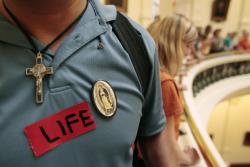Lumbini

Lumbini (Sanskrit for “the lovely”) is a Buddhist pilgrimage site located at the Nepalese town of Kapilavastu, district Rupandehi, near the Indian border.
Lumbini is one of four Buddhist pilgrimage sites based on major events in the life of Gautama Buddha. Interestingly, all of the events occurred under trees.
The other three sites are in India: Bodh Gaya (enlightenment), Sarnath (first discourse), and Kushinagar (death).
History
Lumbini is the traditional birthplace of Gautama Buddha, the founder of Buddhism, who was born in the 7th or 6th century BC.
According to Buddhist tradition, Maya Devi (or Mayadevi) gave birth to the Buddha on her way to her parent’s home in Devadaha in the month of May in the year 642 BC. Feeling the onset of labor pains, she grabbed hold of the branches of a shade tree and gave birth to Siddharta Gautama, the future Buddha. The Buddha is said to have announced, “This is my final rebirth” as he entered the world. Buddhist tradition also has it that he walked immediately after his birth and took seven steps, under each of which a lotus flower bloomed.
In 249 BC, the Buddhist convert Emperor Ashoka visited Lumbini and constructed four stupas and a stone pillar. Ashoka’s Pillar bears an inscription that translates as: “King Piyadasi (Ashoka), beloved of devas, in the 20 year of the coronation, himself made a royal visit, Buddha Sakyamuni having been born here, a stone railing was built and a stone pillar erected to the Bhagavan [“blessed one”] having been born here. Lumbini village was taxed reduced and entitled to the eight part (only)”.
Monasteries and temples were built at Lumbini until the 9th century, but Buddhism declined in the area after the arrival of Islam and later Hinduism. All that remained was a sculpture, revered by local women as a fertility symbol. The garden of the Buddha’s birth was lost for a thousand years.
The site was rediscovered in 1895, when a German archaeologist came upon Ashoka’s Pillar, identified by its inscription. Records made by the Chinese pilgrim Fa Xian were also used in the process of identifying this religiously acclaimed site. Lumbini was designated a UNESCO World Heritage Site in 1997.
What to See
Lumbini lies in the foothills of the Himalayas in Nepal. The site is a large garden with a grove of pipal trees. The area around Lumbini is entirely Hindu, but many Buddhist temples and shrines from various nations are scattered around the holy site itself.
The most important temple at Lumbini is the Maya Devi Temple, which enshrines the traditional site of the Buddha’s birth. The current temple stands on the site of earlier temples and stupas, including the stupa built by Ashoka.
The modern temple consists mainly of simple white building that protects ancient ruins, with the exact spot of the Buddha’s birth identified. The delicate sandstone sculptures discovered here are now in the National Musuem in Kathmandu.
Atop the temple is a small square tower of the type seen in Kathmandu, with Buddha eyes on each side and a golden pinnacle on top.
On the south side of the temple is a sacred pool (see top photo), where it is said Maya Devi bathed before giving birth, and where the newborn Buddha was washed by two dragons.
The Maha Devi temple is surrounded by the brick foundations of ancient temples and monasteries. All around Lumbini, long lines of colorful prayer flags are strung between trees. They carry prayers and mantras heavenward as they flap on the breeze.
The other main sight of interest at Lumbini is Ashoka’s Pillar, near the temple. It is protected by a small fence, which is decorated with prayer flags and banners from the faithful. Around the courtyard containing the pillar are bowls for incense sticks, and there is room to sit in front of the pillar for contemplation.
Getting There
Lumbini is in west-central Nepal near the Indian border. It is not terribly easy to get to, and the site does not receive a large amount of visitors. Most pilgrims to Lumbini come from Southeast Asia, Japan and Tibet, but westerners come regularly as well.
Lumbini has a small airport, which receives flights from airlines like the aptly-named Buddha Air. Consult the links below for more information.
Caracol

Caracol is an important Mayan city that flourished in the 6th century AD and now lies in ruins in west-central Belize, near the border with Guatemala. The city, which lay hidden in the jungle until its discovery in 1938, contains numerous pyramids, royal tombs, dwellings and other structures, as well as a large collection of Mayan art.
History
The largest Mayan site in Belize, Caracol once occupied a large area (88 sq km) and supported a population of about 140,000 people. Its Mayan name was Oxwitzá, (“three hill water”). The name Caracol means “snail” in Spanish and refers to the large number of snails found here during early explorations.
The earliest known habitation of Caracol occurred as early as 900 BC, but the first known Mayan ritual complexes date from about 70 AD, when the Temple of the Wooden Lintel and locus B34 burial were built. Another elaborate burial was added to the same site around 150 AD.
The Caracol royal dynasty was founded in 331, and the city rose in power over the next two centuries. Caracol flourished from the 6th to 8th centuries, after which it rapidly declined. In 562, Caracol defeated the Mayan city of Tikal and assumed leadership of the region. It went on to defeat another rival city, Naranjo, in 631.
The last date recorded on a stele at Caracol is in 859 and the city was totally abandoned by 1050. The ancient Mayan city was overtaken by the jungle and forgotten until its rediscovery by a woodcutter in 1937.
Archaeologists first arrived in 1952-53 and began preliminary studies, but extensive clearing of the jungle and dedicated archaeological work did not begin until 1985, under the leadership of archaeologists Diane Chase and Arlen Chase of the University of Central Florida. An on-site museum was opened in 1998 and excavations continue today.
What to See
Caracol is located in the Chiquibil Forest Reserve of west-central Belize, just 47 miles from the Mayan city of Tikal (in Guatemala). Designated the Caracol Archaeological Reserve, the site is not as extensively cleared as others in the region, but this allows for more atmosphere and wildlife spotting.
So far, Caracol archaeologists have uncovered two ball courts and three main plazas surrounded by pyramid temples and other structures. Over 100 tombs have also been found, as well as a rich array of hieroglyphic inscriptions, which reveal the history of this lost Mayan city.
The most impressive sight at Caracol is a hillside complex known as Caana, which is Maya for “Sky Place.” Rising 43.5 meters above the plaza below, Caana contains four palaces and three temples. It is one of the most elaborate complexes found so far in the Southern Maya region. The palace rooms were originally coated with white stucco and decorated with red paint.
The largest tomb discovered so far was hidden deep below Caracol Stucture B19. The tomb chamber was also coated with white stucco and decorated with a thick red line around the center and a large red panel at one end. Inside the red panel is an inscription recording the date 634 AD. The only occupant of the chamber was an adult female, who had been bundled in cloths and accompanied by ceremonial vessels.
US parishes celebrate Respect Life Sunday

The first Sunday of October has been designated Respect Life Sunday in the United States, beginning a year-long educational and prayer campaign on the dignity of human life from conception to natural death.
The United States Conference of Catholic Bishops (USCCB) has called on parishes throughout the US to preach this Sunday about the importance of respecting human life.
Among the initiatives which the USCCB is encouraging throughout the year include a novena for life and a day of prayer and penance for the unborn to mark the anniversary of the Supreme Court decision to legalize abortion.
Respect for Life Sunday was established by the USCCB as “a means to have an annual remembrance of the need to respect human life,” explains Joseph Meaney, director of international coordination for Human Life International.
“It is very important to realize,” he told Vatican Radio, “that we are all called to do something, in our own little way, in our own little corner of the world, to make it a better place, and that we can really save human lives simply by being joyful witnesses to life.”
Listen to Ann Schneible’s full interview with Joseph Meaney: RealAudioMP3
Shocking revelation: priests are normal people
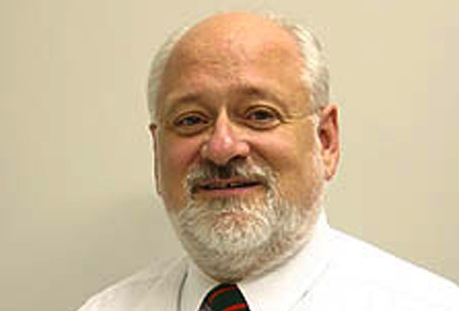
When I was in high school, I had an after-school and summer job delivering medical supplies to infirmaries and clinics in department stores, ships and office buildings in New York City.
Over time, I got to know many of the receptionists at those places. Lugging boxes around ‘the concrete jungle’ as I went from place to place in New York’s hot, humid summer made the air conditioned reception areas of office buildings attractive places for a short break.
One summer day, a receptionist at the headquarters of an insurance company asked what my plans for the future were. I told her that I was entering a seminary at the end of the summer holiday.
With a shocked expression on her face, she said, “but you’re normal! Why would you do something like that?”
There are people who think there is something abnormal about priests. Some think we are ignorant, crazy and possibly dangerous fanatics. The sexual abuse of children by bishops and priests and its cover-up have given them good reasons to think that way. Usually, they have never actually met and talked with any of us. So long as those people are not aggressively ill-mannered, I generally find their attitude no more than mildly annoying, sometimes embarrassing and often even amusing. A bit of conversation, perhaps over a drink, is enough to get them to admit that there might be at least one exception to their rule.
The people with whom I have no patience are those who think clergy are abnormal because they are somehow or other superhuman beings with special access to God, possessing special wisdom and power and deserving special treatment. Among those who think this way are too many clergy.
I once saw a book for seminarians that warned against frequent contact with lay folk lest they realize that “priest eggs” (as they are sometimes called in Japan), are normal human beings. Clergy often receive special treatment, more often than not the sort of treatment one might give an imbecile demigod who is semi-divine, but incapable of handling the normal demands of life – like picking up a restaurant check.
Too many of the objects of special treatment rather like life on a pedestal. Some expect such treatment. There are many who shape their lives around being ever ready to receive it. I’ve even met a few sorry cases who became priests in order to have a place upon the pedestal.
There are others (the majority, I hope, but sometimes I wonder) who try to climb down from the pedestal upon which others put them. But people try to shove them back. Why is that? Why do so many people want their clergy to be specially treated and insulated from life? Is it a bribe?
If so, what do people gain by their deference, their special treatment toward religious leaders? In bribing the preachers, do they unconsciously hope to bribe God? Are they looking for some sort of payback from God? Does treating clergy as children allow people to not take them seriously? Perhaps they are hoping that by putting preachers outside the responsibilities of everyday life, they can keep them from applying the Word of God to those situations of everyday life where they would rather not have to hear what God expects of us.
Does it matter? Yes, it does, because in addition to the sacraments, clergy do have something important to offer the Church in its mission to the world: guidance, education, example. Giving example is not unique to them, of course – every Christian is an example of how to live as a disciple of Christ – but by being publicly recognized representatives of the community, the clergy are in a position to attract attention from those who want or need to see the servant Church in action. But, how can someone who acts or is treated as nobility show what it is to be a servant? How can someone treated as an incompetent instruct?
So, what shall we do? We can probably do little about clerical careerists who likely have purple piping on their bathrobes and gold cufflinks on their pajamas. Settling for the material and emotional “perks” of ministry and missing out on the spiritual excitement and rewards of real service is their self-inflicted punishment.
We can, however, see what we do to perpetuate the semi-deification of the clergy. For starters, imagine asking a bishop, priest or deacon to help wash the dishes. If the thought startles you, ask why it does and if it should.
Cardinal Luis Antonio Tagle, archbishop of Manila, recently told ucanews.com that he was surprised that the media is making a fuss about an interview with Pope Francis “that looks very normal”. The cardinal may have missed the point that normalcy from a pope (as from Cardinal Tagle, himself reportedly a refreshingly normal man) is newsworthy. We have a pope who probably need not be asked to help with the dishes because he would volunteer to do them.
The unseemly spectacle of hypocritical bishops and priests around the world falling over themselves to praise the new pope’s normalcy when only months ago they sang equally loud paeans to a monarchical papacy and hierarchy is actually a cause for some hope. Whether it be pandering or real conversion, we may be able to expect to see clergy in the kitchen who never before knew where it was. They may find that they like having soapy hands.
And then they will be better able to lead us into the dirty places of our world to bring the cleansing Word.
After Ecstasy

The enthusiastic reaction to Jorge Mario Bergoglio’s choice of the name Francis underscores the ongoing power of the saints in shaping the Catholic sacramental imagination. The new pope implicitly suggests that the things that mattered to St. Francis-concern for the poor, care of creation, a commitment to pacificism and the reform of religious life-may also matter to him and therefore to millions of Catholics.
But getting a sense of saints as real people can be difficult, since joining the cloud of witnesses tends to both smooth over the sharp edges of their personalities and over-polish the tarnished ordinariness of their day-to-day lives. The cloud quickly becomes a disorienting fog when it comes to saintly women in the church, who not only faced the challenge of living authentic responses to the countercultural call of the Gospel in the midst of narrow social and religious ideals of femininity, but also mediated their relationship with the sacred in the midst of far more profane relationships, voluntary and involuntary. Perhaps Dorothy Day was thinking of Joni Mitchell when she resisted sainthood-It’s cloud’s illusions, I recall, I really don’t know clouds at all.
Three new novels imaginatively attempt to bring three women saints-Hildegard von Bingen (canonized and made a doctor of the church in 2012), Joan of Arc (burned as a heretic in 1431 but made a saint in 1920) and Xenia of St. Petersburg (canonized by the Russian Orthodox Church in 1988)-into focus for the 21st century by exploring the gaps in the historical and hagiographical record. The authors blend the factual drama of each women’s historical context and mundane details of their daily lives with more fictitious accounts by named and anonymous people affected by their holiness-biological and religious family members, lovers and comrades, friends and bystanders.
In portraying actual women shaped by a variety of circumstances beyond their control and haunted by multiple personal longings, the novels suggest that the power of the saints rests not so much in what they did but rather how they wrestled with the demons that arose from their need for relationships with other people-Hildegard’s loneliness in a vocation not of her choosing, Joan’s fear of disappointing the men she led, Xenia’s grief at the loss of the love of her life.
In Illuminations: A Novel of Hildegard von Bingen Mary Sharratt debunks the romantic myth of the medieval anchorage by invoking the terrifying perspective of a child of 8 years entombed in two tiny rooms with a mentally unstable woman whose relentless narcissistic asceticism could only be described as psychologically and physically abusive. We observe Hildegard finding solace year after year for three decades, growing plants in a walled outdoor cell warmed by the sun for a handful of moments each day or in brief encounters across the screen with her confessor. Sharratt contrasts the suffocating demands of solitary confinement with Hildegard’s free ranging spaces of internal freedom-in her writings, her music, her cosmic sensibility and her deep prayer life. She also captures the anchorite’s balancing act as she came into her own-carefully not surpassing the literal outsiders’ sense of the glory of her magistra, Jutta, as she herself begins to attract devotees; judiciously not overstepping hierarchical authority in forming her own community; piously not allowing herself to favor any women in her community or to allow her love of them to surpass her love of God.
How do you pray the Rosary?

One of the most difficult things for a Catholic publisher to do (in terms of pleasing everyone) is to explain how to pray the Rosary!
You would think this would be easy, however, there are so many variations in the ways people pray the Rosary that it can make your head spin!
I was reminded of this last night when we took the kids to church to pray the Rosary. Two weeks earlier, I taught my class how to pray the Rosary as I was taught, which, if compared to cable TV packages, would be the “basic” package: Sign of the Cross, Apostles’ Creed (not all the time, however), Our Father, 3 Hail Marys, Glory Be, and then 5 decades beginning with announcing the Mystery, an Our Father, 10 Hail Marys, and a Glory Be. Amen.
Our experience in church last night was very different and, to go back to the cable TV comparison, would be the “premium” package: all of the above plus the Fatima prayer at the end of each decade, the Hail, Holy Queen at the end as well as The Rosary Prayer (“O God, whose only begotten Son…”) and the Prayer to St. Michael the Archangel (all nicely provided on a much-needed and much-appreciated prayer card).
Some people don’t stop there, however, and use what we might call the “Platinum package!” which includes everything in the Premium package as well as some or all of the following:
Beginning with the “Come Holy Spirit” prayer
Beginning with “O God, come to my assistance, O Lord make haste to help me.”
Beginning with the Divine Praises
ending with the Litany of the Blessed Virgin Mary
ending with the Memorare
An additional Our Father, Hail Mary, and Glory Be for the intentions of the Holy Father
inserting the Miraculous Medal Prayer
A Prayer for the Unborn after each Fatima Prayer
Suffice it to say, there is no “official” way to pray the Rosary: it is a devotion, not a Rite of the Church. Even Pope John Paul II was criticized by some for not including mention of the Fatima prayer in his Apostolic Letter on the Rosary. In the end, the most important thing about the Rosary is the meditation on the Mysteries, for that is precisely how we pray “to Jesus, through Mary.” My own feeling is that, the Rosary is already a “wordy” prayer so I prefer not to add more words than “required” for each bead (I find it challenging enough to teach kids to learn how to pray the Rosary with the “basic package”). That’s only a personal preference and not a value judgment on the variations practiced by many Catholics, all of which are true expressions of devotion to Mary and faith in Jesus Christ.
I’ll end by providing a link to the USCCB Website on how to pray the Rosary: if you would like to argue that there is an official or “right” way to pray the Rosary, I suggest you take it up with our bishops! 🙂 In the meantime, feel free to share your approach to the Rosary.
Trust in God
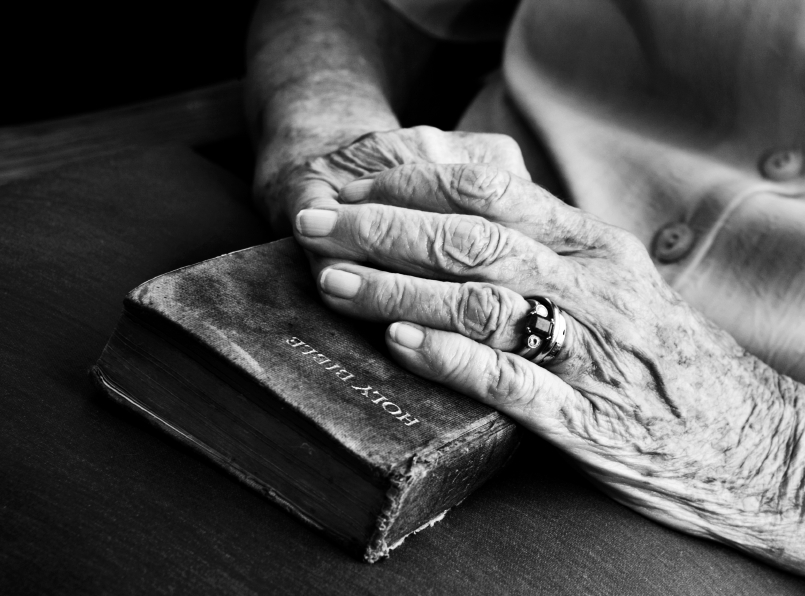
by ANDY OTTO
What does it mean to trust in God? Christians who call themselves faithful may say they place their uncertainties or difficult decisions in the “hands of God.” But trusting in God does not mean stepping out of the picture.
St. Ignatius tells a story in his autobiography that gives an example of an immature understanding of trust in God. On the road to Montserrat, at the beginning of his new life as a follower (or soldier, as he might say) of Christ, Ignatius encountered a Moor who disagreed with some of his beliefs. According to Ignatius, the man was disrespectful of the Virgin Mary. Ignatius, in a reactive moment, felt that he should kill the Moor to defend Mary’s honor. As the Moor went off, Ignatius decided at a fork in the road that if his donkey went down the path the Moor had taken, he would kill the man, but if the donkey went the other way then he would not. Thankfully the donkey chose the path that did not lead to murder!
While St. Ignatius might have thought that this was a form of discernment that trusted in God’s decision, it was not! (He matured a lot after that experience.) Real trust in God does not shift responsibility away from us. I recently was asked to draw out a “map” of my faith story, where I came from, and what important moments led me to where I am now. I considered my upbringing in the faith, receiving the sacraments of initiation, my time in college and then in the Jesuits, and the relationships I’ve had, finally ending where I am now: engaged and studying theology in graduate school. Looking at my faith map I could see the hand of God. But each step was never outside of the choices I made. There was always some discernment that led me to choose the next path, and then the next.
A mature trust of God is trust in the fruits of discernment and reflection leading us to make one decision or another. We should never carelessly leave it up to chance. Trust in God is not about chance or luck; it’s about collaborating with God on the choices for my life. God guides me, prompts me, and may even push me, but ultimately every choice is up to me.
St. Alphonsus Rodriguez
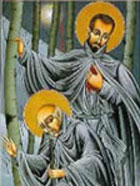
Some saints attack the world head-on, like St. Peter Claver, the friend and disciple of St. Alphonsus Rodriguez. Others like Alphonsus himself fight personal battles against failure, loss, temptation, and disease. We tend to admire more activist champions such as Peter Claver, who worked among slaves for forty years. But why should we think any the less of saints such as Alphonsus, who was more like us in his ordinariness and suffering? And who showed us how to be faithful in long lasting spiritual and personal struggles?
Alphonsus’s early years in Segovia, Spain, are a story of tragedies. When he was fourteen, his father died and he left school to help his mother run the family business. At twenty-three he married, but his wife died in childbirth three years later. Within a few years his mother and son also died. On top of this, his business was failing, so he sold it. Recognizing a late vocation to religious life, he applied for admission to the Jesuits at Segovia, but was refused because he was not educated. Undaunted, Alphonsus returned to Latin school, humbly bearing the ridicule of his adolescent classmates. Finally, in 1571, the Jesuit provincial accepted him as a lay brother. He was sent to Montesione College on Majorca, where he served as doorkeeper for forty-five years.
His post allowed him to minister to many visitors. And he became the spiritual adviser to many students. He exerted wide-reaching influence, most notably in guiding St. Peter Claver into his mission to the slaves.
Alphonsus adhered to a few simple spiritual guidelines that navigated him through his troubles and trials. For example, a method for finding joy in hardship:
Another exercise is very valuable for the imitation of Christ-for love of him, taking the sweet for the bitter and the bitter for sweet. So, I put myself in spirit before our crucified Lord, looking at him full of sorrow, shedding his blood and bearing great bodily hardships for me.
As love is paid for in love, I must imitate him, sharing in spirit all his sufferings. I must consider how much I owe him and what he has done for me. Putting these sufferings between God and my soul, I must say, “What does it matter, my God, that I should endure for your love these small hardships? For you, Lord, endured so many great hardships for me.” Amid the hardship and trial itself, I stimulate my heart with this exercise. Thus, I encourage myself to endure for love of the Lord who is before me, until I make what is bitter sweet. In this way learning from Christ our Lord, I take and convert the sweet into bitter, renouncing myself and all earthly and carnal pleasures, delights and honors of this life, so that my whole heart is centered solely on God.
In his old age, Alphonsus experienced no relief from his trials. The more he mortified himself, the more he seemed to be subject to spiritual dryness, vigorous temptations, and even diabolical assaults. In 1617 his body was ravaged with disease and he died at midnight, October 30.
Yet God (that hews mountain and continent,
Earth, all, out; who, with trickling increment,
Veins violets and tall trees makes more and more)
Could crowd career with conquest while there went
Those years and years by without event
That in Majorca Alfonso watched the door.
Bl Dominic Collins, SJ
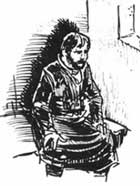
Dominic Collins was born in the seaport town of Youghal, in County Cork, Ireland. His family was well established and respected and both his father and brother were mayors of Youghal. As Elizabeth 1 was queen of England and Ireland, Anglicanism was established as the official religion and Irish Catholics periodically suffered persecution. Although the laws were not fully enforced yet in Youghal, young Collins, like other young catholic men there had few careers open to them. He chose to leave Ireland to seek his fortune in France.
So at twenty, Collins arrived in France and for the first three years worked as a servant in various inns in Brittany before he was enlisted in the army of the Duke of Mercoeur, a member of the Catholic League who was fighting against the Huguenots in Brittany. Dominic served with distinction during his nine-year military career in France and was made captain of the Calvary and later military governor when he succeeded in recovering the land from the Huguenots.
Although Dominic received a monthly pension of twenty-five crowns from his service to King Philip of Spain, he soon realized that soldiering was not what he wanted. He decided to do something else with his life. In the Lent of 1598, he met the Irish Jesuit Thomas White who introduced him to the Jesuit superiors in Salamanca after hearing Dominic’s desire to do something more with his life. Although he was thirty-two, the Jesuit provincial thought it was wise to delay his entrance, perhaps to test the strength of his vocation. Dominic finally entered the Jesuit novitiate in Santiago de Compostela in northern Spain as a brother in Dec 1598 and took his vows in Feb 1601. Seven months later, Dominic, now Bro Collins, was assigned as the companion and assistant to Fr James Archer, an Irish Jesuit who was sent by the king as chaplain of the Spanish expedition to assist Catholics in Ireland.
The two Jesuits sailed in Sep 1601 on different vessels which became separated during a storm. When Bro Collins finally reached Ireland in Dec, the English army had laid siege to the town. The Irish attacked at dawn on Christmas Eve but was defeated. Bro Collins found Fr Archer in Feb, 1602 and together the two Jesuits proceeded to Dunboy Castle, which the Irish had recently regained. Some months later Bro Collins found himself ( Fr Archer had left for Spain to persuade the king to send reinforcements) besieged inside Dunboy Castle with 143 defenders. With the landing on June 6 of huge English forces, Dunboy Castle towers began to topple from heavy bombardment. The Irish defenders suffered huge casualties and surrendered. Bro Collins emerged and gave himself up while the remaining seventy-seven defenders with the exception of two were subsequently executed in the castle courtyard.
Bro Collins was later imprisoned in Cork and despite several offers to spare his life if he would divulge information about Catholics and to renounce his vocation as a Jesuit and join the established Church, he flatly refused. He also rejected the offer of an honorable position in the Government’s military and also Protestant ministers’ offers of ecclesiastical preferment if he would apostatize. Even his own relatives tried persuading him to renounce the faith by outwardly conforming to the new religion but remain a Catholic at heart he had to reject them.
Bro Collins was finally condemned to death and on October 31, 1602. He was taken to Youghal, his hometown and hanged. Before he ascended the scaffold to be hanged, he addressed the crowd in Irish and English, saying that he was happy to die fro his faith. He was so cheerful that an English officer remarked, “He is going to his death as eagerly as I would go to a banquet.” Bro Collins overheard him and replied, “For this cause I would be willing to die not once but a thousand deaths.”
Bro Dominic Collins, together with sixteen other martyrs of Ireland, who died between 1579 and 1654, was beatified by Pope John Paul II on September 27, 1992 .
Wisdom Story – 72

by Paul Brian Campbell,SJ
A story from Blessed Teresa of Calcutta:
Some of my sisters work in Australia. On a reservation, among the Aborigines, there was an elderly man. I can assure you that you have never seen a situation as difficult as that poor old man’s. He was completely ignored by everyone. His home was disordered and dirty. I told him, “Please, let me clean your house, wash your clothes, and make your bed.” He answered, “I’m okay like this. Let it be.” I said again, “You will be still better if you allow me to do it.”
He finally agreed. So I was able to clean his house and wash his clothes. I discovered a beautiful lamp, covered with dust. Only God knows how many years had passed since he last lit it. I said to him, “Don’t you light your lamp? Don’t you ever use it?” He answered, “No. No one comes to see me. I have no need to light it. Who would I light it for?” I asked, “Would you light it every night if the sisters came?” He replied, “Of course.”
From that day on the sisters committed themselves to visiting him every evening. We cleaned the lamp, and the sisters would light it every evening. Two years passed. I had completely forgotten that man. He sent this message: “Tell my friend that the light she lit in my life continues to shine still.”
I thought it was a very small thing. We often neglect small things.
– See more at: http://peopleforothers.loyolapress.com/2011/09/wisdom-story-72/#sthash.l1HuX5CJ.dpuf

